#shaggy parasol
Explore tagged Tumblr posts
Text


Lepiota rhacodes and Leccinum scabrum
#lepiota rhacodes#shaggy parasol#Chlorophyllum rhacodes#Leccinum scabrum#Boletus scaber#Brown Birch Bolete#mycology#mushrooms#fungi#forest floor#naturecore#nature photography#original photographers#photographers on tumblr
230 notes
·
View notes
Text



#shaggy parasol#mushrooms#mycology#shroomblr#photography#original photography on tumblr#artists on tumblr
1 note
·
View note
Text
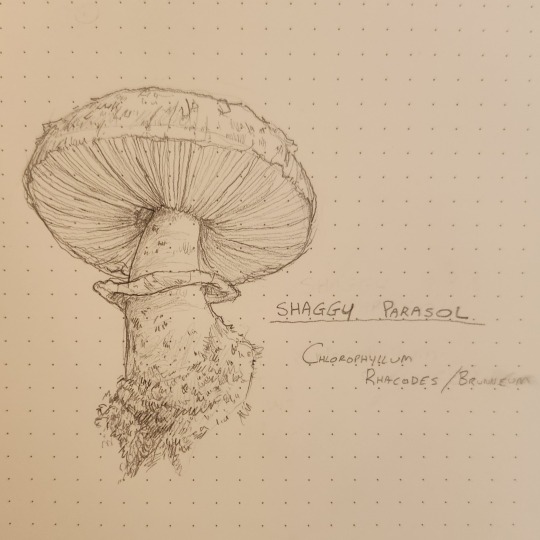
1 note
·
View note
Text

shaggy parasol, Scotland, Aug 2023
0 notes
Text
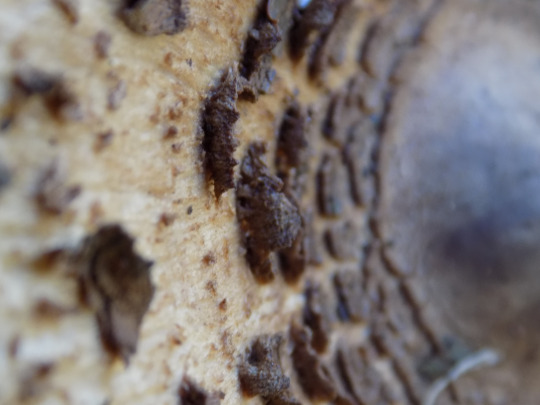
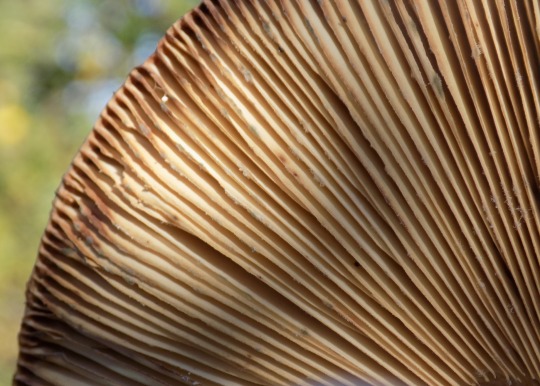
Shaggy parasol detail. {{ Chlorophyllum rhacodes }}
#mycology#fungi#mushrooms#shaggy parasol#Chlorophyllum rhacodes#mushroom#photography#nature photography
1 note
·
View note
Text

Olive Shaggy Parasols
#artists on tumblr#original photographers#original photography#hiking#pacific northwest#nature#washington#pnw#nikon#orofeaiel#goblincore#mushrooms#mycology#forest floor#forest finds#fungus among us#macro photography#olive shaggy parasol
77 notes
·
View notes
Text


the thing keeping me sane lately is making little paintings of mushroom girls almost every day. here's a white double-ringed shaggy parasol and a rhubarb bolete
387 notes
·
View notes
Text
Writing Notes: Mushrooms
The edible parts of fungi are the fruiting bodies that are produced very dramatically by huge spreading masses of mycelia, which draw their nutrients as parasites from roots and decaying vegetation.
BAY BOLETUS (Boletus badius)

Usually found in woodlands, this fungus is pale to brown in colour.
Has light yellow pores on the underside and these stain blue if damaged.
The flesh also stains a bluish colour when cut and smells very mushroomy.
The stalk has no frills but is smooth from base to cap.
Can be stored by slicing and drying or flash freezing.
They taste fine raw when sliced and make great soup.
SHAGGY INK CAP (Coprinus comatus)

Very common but distinctive mushroom.
Easy to identify with its egg-shaped shaggy cap.
Often grows on newly disturbed ground in large clusters.
The cap is covered with beautiful white scales and there is no veil on the stem when the cap opens to a bell shape with a dark black underside.
Need to be young and fresh to make good eating.
Shaggy ink caps make a wonderful mushroom soup.
These mushrooms do not store well, so they are best used fresh.
GIANT PUFFBALL (Langermannia gigantea)

Can grow to 80 cm diameter.
The huge white ball of a giant puffball is not hard to identify.
Must be used young before the spores have time to develop and the insects have time to take their share.
Slice them up like rump steak to cook them.
By themselves they have little flavour, but fried quickly with a little bacon they are delicious.
HORSE MUSHROOM (Agaricus arvensis)

Can be found on old pastures that has been grazed by horses or cattle.
Has a slight aniseed smell and does not shrivel up when cooked.
Just beware you don’t over-indulge if you are lucky enough in these times of chemical farming to find a crop of these.
The cap of the horse mushroom may be yellowy in colour, but be careful not to confuse it with the “yellow stainer” fungus, which will make you ill.
CHANTERELLE (Cantharellus cibarius)

May be found in woodland clearings.
Seasoned mushroom hunters will keep their locations a close secret as they tend to grow in the same places each year.
Are fairly small – up to 4 inches (10 cm) across but usually smaller – with a distinctive yellow colour and a slight smell of apricots.
The caps become like small, fluted trumpets as they age and the gills are heavy, irregular and run down the stems.
Best stored in good olive oil or in spiced alcohol.
PARASOL (Macrolepiota procera)

Usually found in open fields and has large brown scales in a symmetrical pattern around a pronounced central bump.
The cap can grow up to 10 inches (25 cm) across and the gills are white.
The stem is long and tough with a large ring around it.
Will dry well for storage.
Make a delicious dish by dipping pieces of the parasol in batter and deep frying.
PENNY BUN (Boletus edulis)

Also known as the “cep” mushroom and is a great prize for the mushroom hunter, as it has an unusual nutty flavour.
Found in woodland or sometimes in heather with dwarf willows, the “cep” can grow quite large – over 2 pounds (1 kg) in weight.
When picking, cut the cap in half to check for maggots. These work their way up through the stems.
Its cap looks just like freshly baked bread.
The colour darkens as the mushroom ages.
The underside will have yellow pores, not gills.
The stem is bulbous and solid white with brown stripey flecks.
Stores well if dried in thin slices.
HONEY FUNGUS (Armillaria mellea)

This yellowy-brown fungus is a tree-killer – but highly edible for humans.
The active part of the fungus is a black cord-like rhizomorph that covers huge areas under the soil and seeks out trees, which it destroys.
Normally grows straight out from trees and stumps, usually in large clumps.
The flesh is white and smells strong and sweet.
The gills vary from off-white to brown and the stalks are tough, often fused together at the base and with a white, cotton-like ring below the cap.
The caps become tough if you dry them so it’s best to freeze.
ORANGE PEEL (Aleuria aurantia)

An extraordinary, brightly coloured and very striking fungus.
Found commonly in large clumps in grassland on bare earth from autumn to early winter. The caps soon become wavy and are of fairly robust texture.
Quite small – up to 2 inches (5 cm) across – the fungus is bright orange on top and a lighter shade on the velvety underside.
These store well if dried.
WOOD MUSHROOM (Agaricus silvicola)

Only found in woodland.
A more delicate version of its close relative, the horse mushroom.
Does not grow out of a volval bag like the death cap and its gills are pink to brown in colour, not white.
The flesh does not discolour when cut and the smell is of a slight aniseed.
The cap is a creamy-yellow colour that darkens as it ages and is smaller than the horse mushroom, growing to only 4 inches (10 cm).
THE PRINCE (Agaricus augustus)

Resembles a stocky version of the parasol.
Grows up to 10 inches (25 cm) wide and is found in woodland.
The top is flecked with brownish scales.
The gills are off-white when young, turning dark brown with age.
The flesh is strong white and smells of mushroom.
The stem is very strong and often scaly with a large floppy ring under the cap – it is too tough to make good eating unless cooked in stews.
It has a strong flavour and can be frozen or dried for excellent winter meals.
FIELD MUSHROOM (Agaricus campestris)

Undoubtedly the best known of all mushrooms, before the days of chemical farming whole fields would be covered by the prolific field mushroom.
Get up early after a hot summer spell has been followed by rain to pick.
The silky white caps grow up to 4–5 inches (10–12 cm), the gills are pink, and the smell mushroomy.
The ring around the stems is very fragile and often missing.
Maggots can be a problem – check older specimens by cutting through the stems.
Can be stored by flash freezing or drying.
WHERE TO LOOK

You will always harvest your best specimens early in the morning. Fungi grow in a wide variety of places, but they will not tolerate chemical fertilizers or sprays.
They say it will take 20 years for the horse mushroom to appear in grassland after the use of chemicals has been stopped.
In fact, the majority of edible fungi grow in the proximity of woodland and many have close symbiotic relationships with particular tree roots.
But wild grassland does always produce an excellent crop of fungi every autumn and you will find each season’s crop in similar places to the previous year’s.
WHAT TO AVOID

There is probably no need to warn you of the fly agaric, as this bright red and white spotted fungus is so well known.
The most dangerous of all fungi is the death cap (Amanita phalloides).
A single death cap contains enough toxins to kill several people:
Usually it grows in woodland, particularly with oak trees. It can vary in colour, being similar in size to a field mushroom, but its characteristic features are white gills on the underside and a “volval” bag at the base. Any fungi growing from a “volval” bag are best left well alone for many are poisonous.
A death cap has white spores, not brown like most edible mushrooms.
Another mushroom to avoid is the “yellow stainer”, easily confused with field or horse mushrooms:
It has the distinctive feature of turning bright yellow when bruised or cut. It also smells rather like disinfectant.
NOTE. There is no easy way to determine whether a fungus is toxic just by looking at it. You should never ingest any unknown fungi. Fungal fruiting bodies can be picked out of the planter pot and thrown in the trash if there is a concern that pets or young children could ingest them.
Sources: 1 2 ⚜ Writing Notes & References ⚜ Food History
#mushrooms#writing reference#writeblr#dark academia#cottagecore#spilled ink#literature#writers on tumblr#writing prompt#mcyology#poets on tumblr#creative writing#naturecore#writing inspiration#writing ideas#light academia#nature#food#forestcore#fungi#writing resources#requested
112 notes
·
View notes
Text
I am having the mental health wobbles so I painted a box I intend to use for tea
I started with the top and it shows but I don't mind! I was learning!

The front has a natterjack in the middle and to the left is a Scarlet Elf Cup mushroom and the Right is a Fly Agaric

Does it bug me a little that the natterjack is off centre? Yes. But I'm comforted by the fact it will annoy my husband more
The left side has a Shaggy Parasol and I think I was getting the hang of it now

The right side has three Common Inkcaps

I'm going to put a cross-stitch project in the top cause it's a picture frame but I have to finish it first
But now I gotta go wash the paint off of me

21 notes
·
View notes
Text
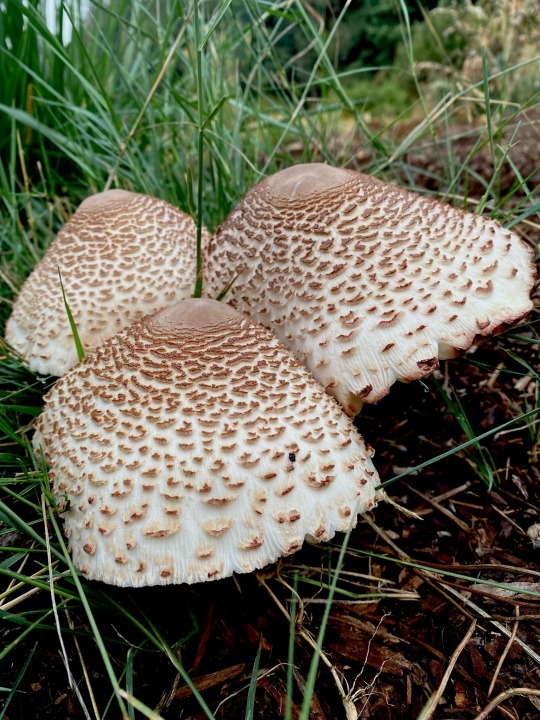
Shaggy Parasol..Lepiota rachodes..
these are nearly six inches diameter with an abundance of buttons waiting their turn..they often fruit in aged stall cleanings..b
198 notes
·
View notes
Note
hi. I dunno if this is ok but I would like to show you the mushrooms I took pictures of at my grandparents? I dunno what kinds they are I just think they're neat. Love your stuff btw!!!








Thank you and thank you for sharing the photos! ❤️ (Yes, it is absolutely OK to share, it's always fun to see mushrooms! ☺️)
OK, I'll try to identify some of them:
Photo 1, photo 2 - shaggy ink caps (Coprinus comatus).
Photo 3 - common ink caps (Coprinus atramentarius aka Coprinopsis atramentaria).
Photo 4 - Cortinarius sp. (I'd say Scaly Webcap (Cortinarius pholideus) but I can't tell clearly from the photo).
Photo 5 - Inocybe sp.
Photo 6 - I have thoughts (from Lactarius to Cortinarius) but nothing conclusive.
Photo 7 - Clitocybe sp. maybe?
Photo 8 - From this angle, I can't tell whether it's Parasol mushroom (Macrolepiota procera) or Shaggy Parasol (Macrolepiota rhacodes aka Chlorophyllum rhacodes).
#mushrooms#fungi#mycology#I hope it's OK I'm sharing with the rest of the class 😁#mushroom photography
81 notes
·
View notes
Text








Green-spored parasol 》 Chlorophyllum molybdites
Also known as the false parasol and the vomiter, this species is highly toxic but not usually deadly. It is the most commonly consumed toxic mushroom in North America as it is often mistaken for the edible parasol mushroom 》 Macrolepiota procera and the shaggy parasol 》 Chlorophyllum rhacodes. It can be distinguished by the green-tinted gills in mature specimens and its pale green spore print, whereas its edible look-alikes will have a white spore print.
Southeast Texas, 25 July 2024
#amatuer mycology#mushrooms#mushroom hunting#mycology#fungi#mushrooms of texas#texas mushrooms#wild fungi#fungi of texas#fungarium#wild mushrooms#mushroom#mushroom identification#toxic mushrooms#poisonous mushrooms#big mushroom#white mushrooms#false parasol#chlorophyllum molybdites#foraging texas#not edible#rot#decay#special interest#goblincore#crowcore#species identification
44 notes
·
View notes
Text
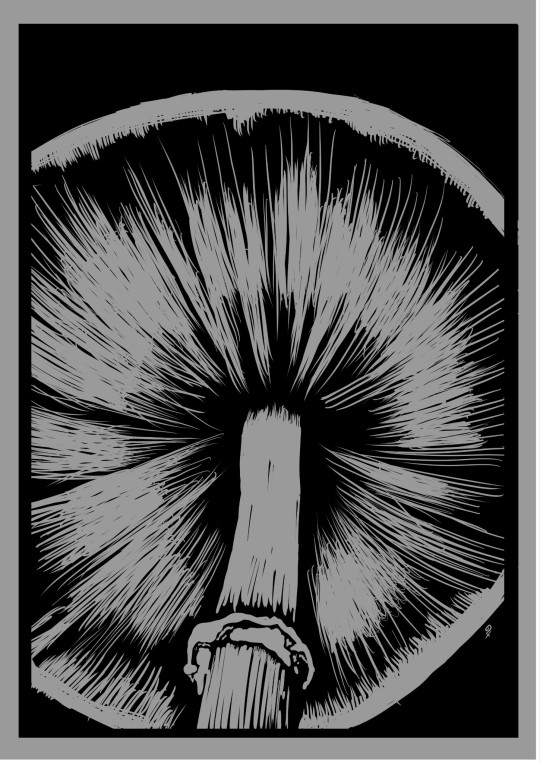
Underside of leucoagaricus americanus (shaggy parasol mushroom) found at McVay Park.
Part of the Wild Westerville Colorable Art Book, order a copy here.
Prints of this image available on Redbubble.
171 notes
·
View notes
Text








Fungi time
As autumn intensifies whole woods, logs, lawns and heaths come alive with enchanting colour, eccentric fruiting bodies of fungal wonders.
The fairytale toadstool, ruby and white-spotted fly agarics spring up, pizza like as they unfurl. Enigmatic pure purple amethyst deceivers and otherworldly devil’s fingers sights to behold; as are mysterious shaggy ink caps that emerge in the grass and warm coloured shaggy scalycaps that huddle around tree bases. Yellow stagshorn, club-like tuning fork and candlesnuff fungi rise into the air. The mighty parasols, complex panthercaps, puffball, earthball and false death caps bring beautiful patterns. It's satisfying to observe bleeding fairy helmets, waxcaps, the meandering patterns of turkey tail; earthstars and eyelash fungi other treasured prizes of captivating fungi watching walks.
#fungi#photography#fly agaric#amethyst deceiver#devil's fingers#yellow stagshorn#new forest#woodland#lawn#autumn#outdoors#nature
12 notes
·
View notes
Text
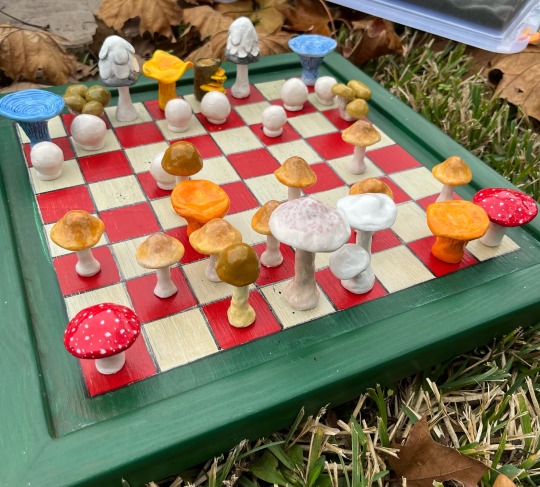
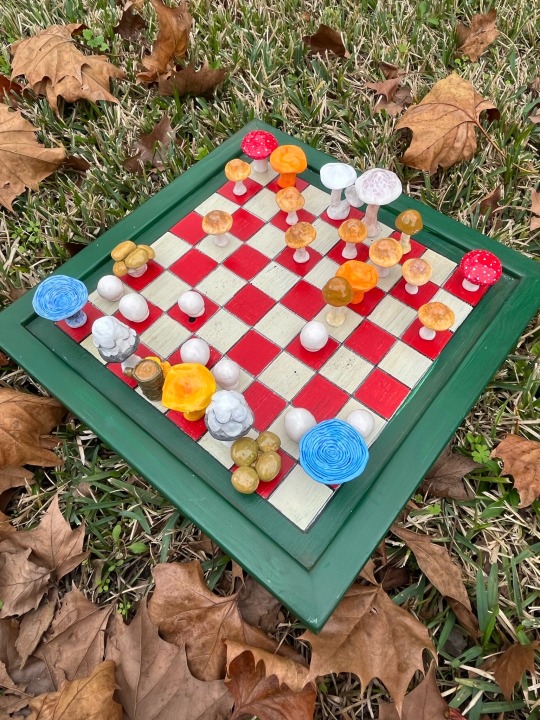
I made a mushroom chess set!
+Details about the set, and more pics under the cut
The two sides are divided into ‘edible’ and ‘poisonous’ mushrooms in Florida
EDIBLE
KING: Chicken of the Woods
QUEEN: Chanterelle
BISHOP: Shaggy Mane
KNIGHT: Oyster
ROOK: Indigo Milk-Cap
PAWNS: Puffball
POISONOUS
KING: False Parasol
QUEEN: Destroying Angel
BISHOP: Deadly Galerina
KNIGHT: Jack O'Lantern
ROOK: Fly Agaric
PAWNS: Sulfur Tuft
Here are some of my faves :-) (Fly Agaric, Shaggy Mane, and Chicken of the Woods)



#mushroom art#chess#clay art#idk how else to tag this but LOOK#it took me like TWO MONTHS#i had to glue them back together MULTIPLE TIMES
37 notes
·
View notes
Text

Shaggy parasol [Chlorophyllum brunneum]
10 notes
·
View notes